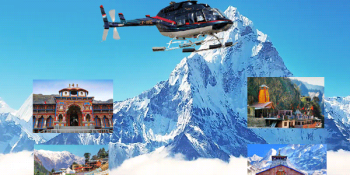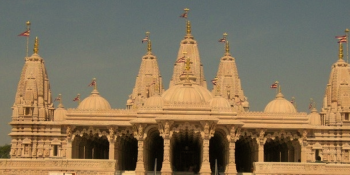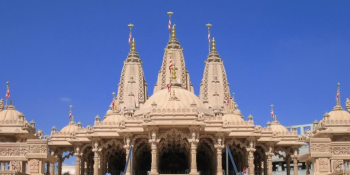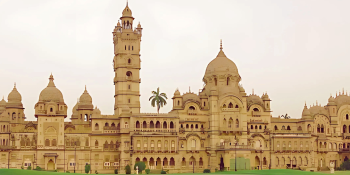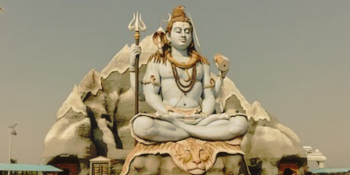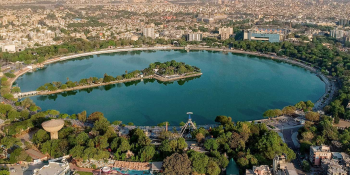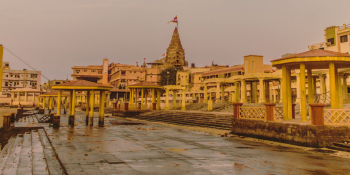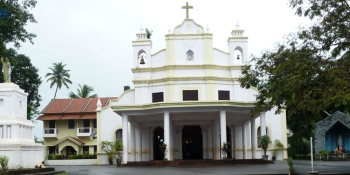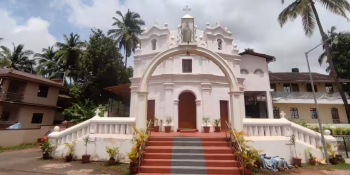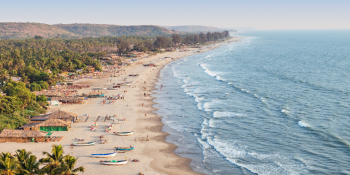Nestled in the northeastern state of Assam, Sibsagar, also spelled Sivasagar, is a city rich in history, culture, and natural beauty. Known as the ancient capital of the Ahom Kingdom, Sibsagar is an epitome of architectural grandeur, serene landscapes, and cultural vibrancy. Whether you’re a history buff, nature enthusiast, or spiritual seeker, Sibsagar offers something for everyone. Here, we explore the city’s transport facilities and major travel attractions.
Connectivity: How to Reach Sibsagar
Airport
The nearest airport to Sibsagar is the Jorhat Airport (also known as Rowriah Airport), located approximately 55 kilometers away. This domestic airport is well-connected to major cities like Guwahati, Kolkata, and Delhi. Travelers arriving at Jorhat Airport can hire taxis or avail of bus services to reach Sibsagar. For international travelers, the Lokpriya Gopinath Bordoloi International Airport in Guwahati (approximately 360 kilometers away) serves as the closest gateway.
Railway Station
Sibsagar Town Railway Station (station code: SRTN) is a small yet significant railway hub connecting the city to various parts of Assam and neighboring states. However, for broader connectivity, the Simaluguri Junction, located about 16 kilometers from the city, is a more prominent option. Trains from Guwahati, Dibrugarh, and Tinsukia frequently pass through this junction, making it convenient for visitors to reach Sibsagar by rail.
Bus Services
Sibsagar is well-connected by a network of state-run and private buses. The Assam State Transport Corporation (ASTC) operates regular bus services from Guwahati, Jorhat, and Dibrugarh. Luxury and semi-luxury buses are also available for a more comfortable journey. The main bus stop in Sibsagar is centrally located, making it accessible for travelers to find onward transport to nearby attractions.
Major Travel Attractions in Sibsagar
1. Rang Ghar
Often referred to as the “Colosseum of the East,” Rang Ghar is an amphitheater built during the reign of the Ahom King Pramatta Singha in the 18th century. This two-storied structure, made of bricks and a unique mortar of rice paste, served as a royal sports pavilion. Visitors can marvel at its architectural brilliance while imagining the grand events that once took place here.
2. Sibsagar Tank and Joysagar Tank
Sibsagar Tank, also known as Borpukhuri, is a man-made reservoir covering 129 acres, surrounded by lush greenery and ancient temples. Built by Queen Ambika in the 18th century, this tank is an engineering marvel as its water level remains higher than the surrounding ground throughout the year. Joysagar Tank, another significant water body, is believed to be Asia’s largest man-made tank and is a serene spot for nature lovers.
3. Talatal Ghar
The Talatal Ghar is a seven-storied architectural wonder with three underground floors and four above-ground levels. Built by King Rudra Singha, this palace served as a military base and features secret tunnels and chambers. It’s a must-visit site for history enthusiasts keen on exploring the ingenuity of the Ahom rulers.
4. Shivadol
Standing tall on the banks of the Sibsagar Tank, Shivadol is one of the tallest Shiva temples in India, with a height of 104 feet. Constructed in 1734 by Queen Ambika, this temple complex also includes Vishnudol and Devidol, dedicated to Lord Vishnu and Goddess Durga respectively. The Mahashivratri festival celebrated here is a major attraction for devotees.
5. Charaideo Maidam
Located about 28 kilometers from Sibsagar, the Charaideo Maidam is often referred to as the “Pyramids of Assam.” These burial mounds of the Ahom kings and queens are an important archaeological site, showcasing intricate designs and offering a glimpse into the Ahom dynasty’s funeral traditions.
6. Gaurisagar Tank and Temples
The Gaurisagar Tank, surrounded by three temples dedicated to Shiva, Vishnu, and Devi, is another prominent attraction. This tranquil spot is ideal for those seeking spiritual solace and picturesque views.
7. Ajan Pir Dargah
Situated near the city, the Ajan Pir Dargah is a revered site for followers of Islam. It is dedicated to the Sufi saint Ajan Fakir, who played a significant role in integrating local culture with Islamic teachings.
8. Dibru-Saikhowa National Park (Nearby)
While not within Sibsagar itself, the Dibru-Saikhowa National Park is about 100 kilometers away and is a paradise for wildlife enthusiasts. Known for its diverse flora and fauna, the park offers a unique experience with its semi-evergreen forests, grasslands, and wetland ecosystems.
Cultural Highlights
Festivals
- Bihu: Celebrated with great enthusiasm, Bihu is the most important festival in Assam, marking the Assamese New Year and the harvest season.
- Mahashivratri: Observed at the Shivadol temple, this festival attracts thousands of devotees and tourists.
Local Cuisine
Sibsagar offers a delightful culinary experience with traditional Assamese dishes like:
- Pitha (rice cakes)
- Duck Curry
- Masor Tenga (a tangy fish curry)
- Aloo Pitika (mashed potatoes with mustard oil and green chilies)
Local tea plantations also offer visitors a chance to sample Assam’s world-famous tea.
Best Time to Visit
The ideal time to visit Sibsagar is between October and March when the weather is pleasant and conducive for sightseeing. This period also coincides with major festivals, offering a glimpse into the cultural vibrancy of the region.
Sibsagar is a treasure trove of history, culture, and natural beauty. With its rich heritage as the capital of the Ahom Kingdom and its serene landscapes, the city promises an unforgettable experience. Whether exploring ancient temples, marveling at architectural wonders, or soaking in the tranquility of its tanks, Sibsagar offers a perfect blend of the past and the present, making it a must-visit destination in Assam.
